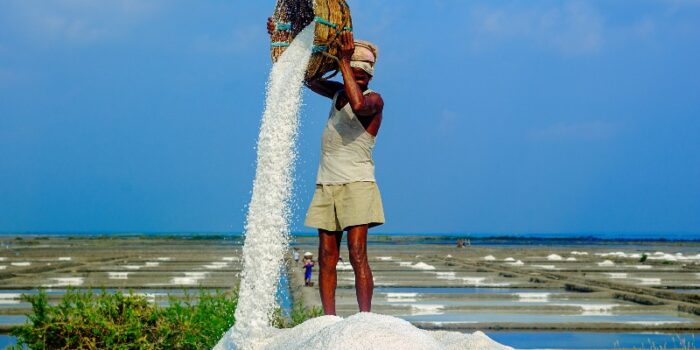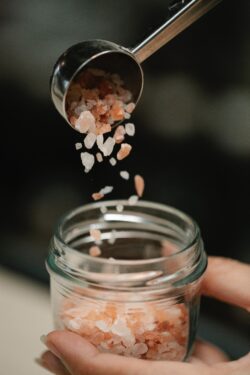
Salt is a part of our daily lives. It’s the one condiment that needs to be added to the food we eat as it provides taste and enhances the flavours. It’s also vital for our body’s functioning, and a lack of it can cause sickness, dehydration and even send someone into a coma!
But that’s not all! In ancient times, salt was used as currency in many parts of the world. Today, it’s used in many industrial processes like water softening and treatments. There are different kinds of salt, but the kind we know as table salt is formed from tiny cubes, which is then further reduced to fine grains. It typically absorbs moisture from the surrounding atmosphere, dissolves completely in water and can even bring down the water’s temperature.

But do you know where this vital, magical ingredient comes from? Like any other food item, it’s harvested!
There are two main ways salt is harvested – salt farms (seawater and brines) and salt mines (rock salt). Let’s dig deeper into how we get this essential ingredient.
One type of salt is rock salt, which is mined from salt mines that are usually found in mountainous regions in South East Asia, Europe, and America. Salt beds and salt domes form in these regions in a hard, crystallised form and are mined through digging and cutting, similar to other minerals. Many times, if the salt mined is of very high quality, it is not even refined. It is simply crushed into flaky salt, sieved and sold in packets (you may have seen packets of pink salt from the Himalayas, which are produced like this).

The inside of the Khewra Pink Salt mine in the Himalayas. Source: Wiki Commons
A brine is a salty solution (usually salt and water) that is used for salt production on large scales and used in kitchens as a preservative for pickling or marinating agent. In the process of salt production, brines are water and salt solutions that are made to extract the salt easily. Sometimes, the salt beds in mines are too far below the earth’s surface and cannot be extracted by machines. Hence, a large amount of water is poured into these spaces in order to dissolve the salt mass and create a salt brine. The brine is then extracted, and after the water evaporates, the impurities, such as sand and clay, are removed, and we get the salt.

A salt farm with huge, evaporation pans. Source: Pexels
Seawater and brines are from where we get most of our edible salt. And while oceans and seas have the most amount of salt (almost 3% of seawater is sodium chloride, i.e. salt), not all seawater can be used to produce edible salt. In some coastal regions, seawater that goes a little inland has a higher salt content – sometimes even up to 15%. These areas, like the Rann of Kachchh, the Great Salt Lake of Utah, or the Dead Sea, which is famous for swimming as you can float easily, have shallow pools of highly salty water.

Salt farmers working in a salt farm in India. Source: Pexels
These pools are channelled into large, shallow ponds, where all impurities like sand are removed. The water is then put through large ‘crystalising pans’ that are placed under the sun for the water to evaporate. This is done three or four times to remove all moisture and extract coarse, crystalised salt. This crystallised salt is washed again in a concentrated brine, then in fresh water, dried again, and then stored for finer processing to be finally sold.
However, solar evaporation is not completely reliable due to climate change and unpredictable weather conditions. In such cases, there are industrial methods to extract salt from a brine using certain chemical processes to separate the salt from the water.
Did you know that iodine is not a part of the salt but is added to it after purification? Before the salt is packaged and sold, there is one important measure that is carried out. Small amounts of iodine are added to ensure that people don’t suffer from an iodine deficiency, which could lead to health problems like goitres. Adding iodine to salt is the easiest way to get the iodine our bodies need and is followed worldwide.
Now that you know how we get salt, tell us what you’d like us to explain next in the comments below!
Madhavi is passionate about everything to do with books, art, literature, films, trivia and food. A former journalist, she believes that asking questions makes life interesting.